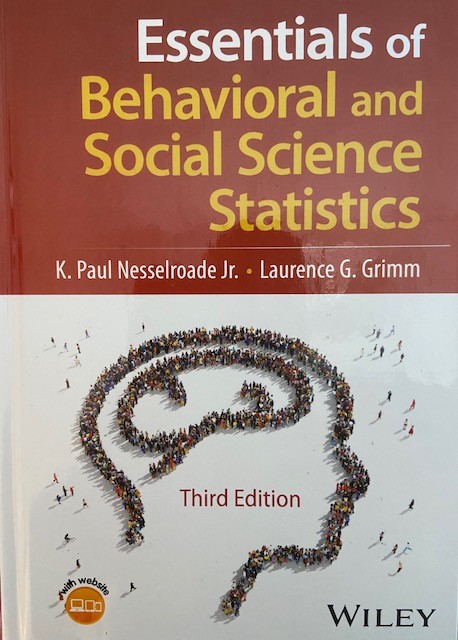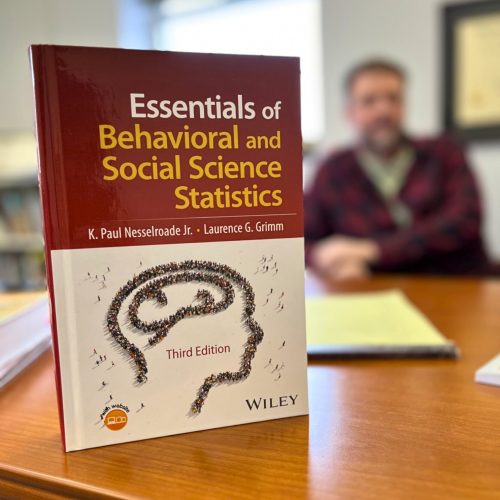
The 3rd Edition is Now Out!
In 2024, I updated a coauthored statistics textbook published by Wiley & Sons. It is the third edition of a longstanding and widely used resource. This edition of the text more quickly gets to the functional applications of the various statistical tools that are covered. It is shortened from the 2nd edition by 2 chapters. However, given the growing replication crisis in several scientific fields, aspects of Chapter 1 (as well as other places) have been extended to provide a more comprehensive contextualization of the work of statistical analysis within the larger frame of scientific investigation. The reader is empowered to think critically about the uses and misuses of statistical conclusions and the asserted scientific claims resting on them. The text is reasonably priced, comprehensive, rigorous, and yet quite accessible and unintimidating. Additionally, it has many unique features (briefly described below) which reflect lessons learned from teaching 80+ sections of this course over the past 25 years.
My employer, Asbury University, recently ran a story on the textbook which can be found here.
Essentials of Behavioral and Social Science Statistics, 3rd Ed.
The text includes:
- Numerous end-of-chapter questions and exercises for student practice and assessment
- Three accumulating and strategically positioned review sections, each containing a set of research-oriented diagnostic questions designed to help students determine which statistical tools are applicable to which research scenarios
- Additional statistical information on follow-up analyses such as post-hoc tests and effect sizes
- A series of sidebar discussions and spotlights dispersed throughout the text that address, among other topics, the recent and growing controversy regarding the replication crisis in the social science
- Information regarding the use of statistical software packages; both Microsoft® Excel and SPSS®
- Renewed emphasis on the proper presentation of data and findings using the APA format
- Supplementary material for instructors consisting of a set of about 150 “Kick-Start” quizzes designed to get students quickly back up-to-speed at the start of an instructional period, and a complete set of ready-to-use PowerPoint slides for in-class use

Below are some excerpts from the textbook specifically chosen with the general reader in mind; namely, several of the sidebar discussions and spotlights noted in one of the bullet-points above. (Simply click on the essay you wish to view.)
Sidebar discussions:
- A Strategy for Studying Statistics: Distributed over Mass Practice
- Some Notes on the History of Statistics
- The Central Tendency of Likert Scales: The Great Debate
- With z Scores We Can Compare Apples and Oranges
- Playing with the Numbers: Create Our Own Sampling Distribution
- Next Steps with Correlations: Scale Development
“Is the Scientific Method Broken?” series of essays
- Is the Scientific Method Broken? The Wallpaper Effect
- Is the Scientific Method Broken? The Misrepresentation of Data/Findings
- Is the Scientific Method Broken? Demand Characteristics and Shrinking Variation
- Is the Scientific Method Broken? Uncertainty, Likelihood, and Clarity
- Is the Scientific Method Broken? The Value of Replication
- Is the Scientific Method Broken? Type I Errors and the Ioannidis Critique
- Is the Scientific Method Broken? The Questionable Use of One-Tailed t Tests
- Is the Scientific Method Broken? The Need to Take Our Own Advice
- Is the Scientific Method Broken? The Limitations of Science
Spotlights:
- Rensis Likert
- Abraham De Moivre and the History of the Normal Curve
- Thomas Bayes and Bayesianism
- William Gosset
- Sir Ronald Fisher
- John Wilder Tukey
- Karl Pearson
- Sir Francis Galton
More information about the hardcover, e-book, or o-book versions of this resource, including the ability to request an examination copy, can be found here. (Your Wiley sales rep can be found at http://bit.ly/wileyrep.)